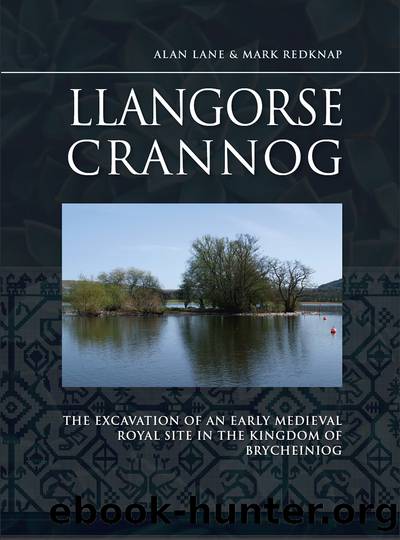Llangorse Crannog by Lane Alan;Redknap Mark;

Author:Lane, Alan;Redknap, Mark;
Language: eng
Format: epub
Tags: SOCIAL SCIENCE / Archaeology
Publisher: Oxbow Books, Limited
Published: 2020-02-28T00:00:00+00:00
13.3. EARLY MEDIEVAL WOODEN OBJECTS
by Mark Redknap
The small number of wooden objects recovered reflects the short occupancy of the site, as well as its nature and the consequences of a range of other factors. These include the extent of the erosion of the top of the stone platform, the lack of identifiable midden deposits in deep water, beyond the interference of feet and boats, the severity of the destruction of the crannog in AD 916 and the limited scale of the excavations. In the absence of ceramic vessels, it is assumed that wooden containers and other items would have been in common use on the site during its twenty-five years of occupancy. Some of these may lie preserved in unexcavated waterlogged deposits on and around the site.
Roughly cut peg fragments â mostly tapering shafts and blunt points â are treated under âstructural timberâ.
Where possible, cross-sections have been drawn to indicate the conversion of the wood.
1594. Twisted withy. (Fig. 13.3.1)
Description: two-strand rope âwithyâ (wood rope) made of lengths of split roundwood 4â6mm in diameter, twisted together. Although in poor condition, it retained a slight curvature, and had a diameter of 7mm. Softwood (perhaps hazel, but further identification not possible).
Dimensions: surviving L. 83mm; max, D. 7mm.
Context: Trench A (1990), US.
Fig. 13.3.1 Early medieval worked wood from Llangorse crannog: withy 1594 and knee 2002.
Download
This site does not store any files on its server. We only index and link to content provided by other sites. Please contact the content providers to delete copyright contents if any and email us, we'll remove relevant links or contents immediately.
| General | Channel Islands |
| England | Northern Ireland |
| Scotland | Wales |
Room 212 by Kate Stewart(4755)
The Crown by Robert Lacey(4583)
Endurance: Shackleton's Incredible Voyage by Alfred Lansing(4527)
The Iron Duke by The Iron Duke(4132)
The Rape of Nanking by Iris Chang(4029)
Killing England by Bill O'Reilly(3901)
Joan of Arc by Mary Gordon(3802)
Say Nothing by Patrick Radden Keefe(3735)
I'll Give You the Sun by Jandy Nelson(3276)
Shadow of Night by Deborah Harkness(3188)
Hitler's Monsters by Eric Kurlander(3177)
Mary, Queen of Scots, and the Murder of Lord Darnley by Alison Weir(3083)
Blood and Sand by Alex Von Tunzelmann(3067)
Darkest Hour by Anthony McCarten(3019)
Margaret Thatcher: The Autobiography by Thatcher Margaret(2973)
Eleanor & Park by Rainbow Rowell(2950)
Red Famine: Stalin's War on Ukraine by Anne Applebaum(2818)
Book of Life by Deborah Harkness(2733)
The One Memory of Flora Banks by Emily Barr(2694)
